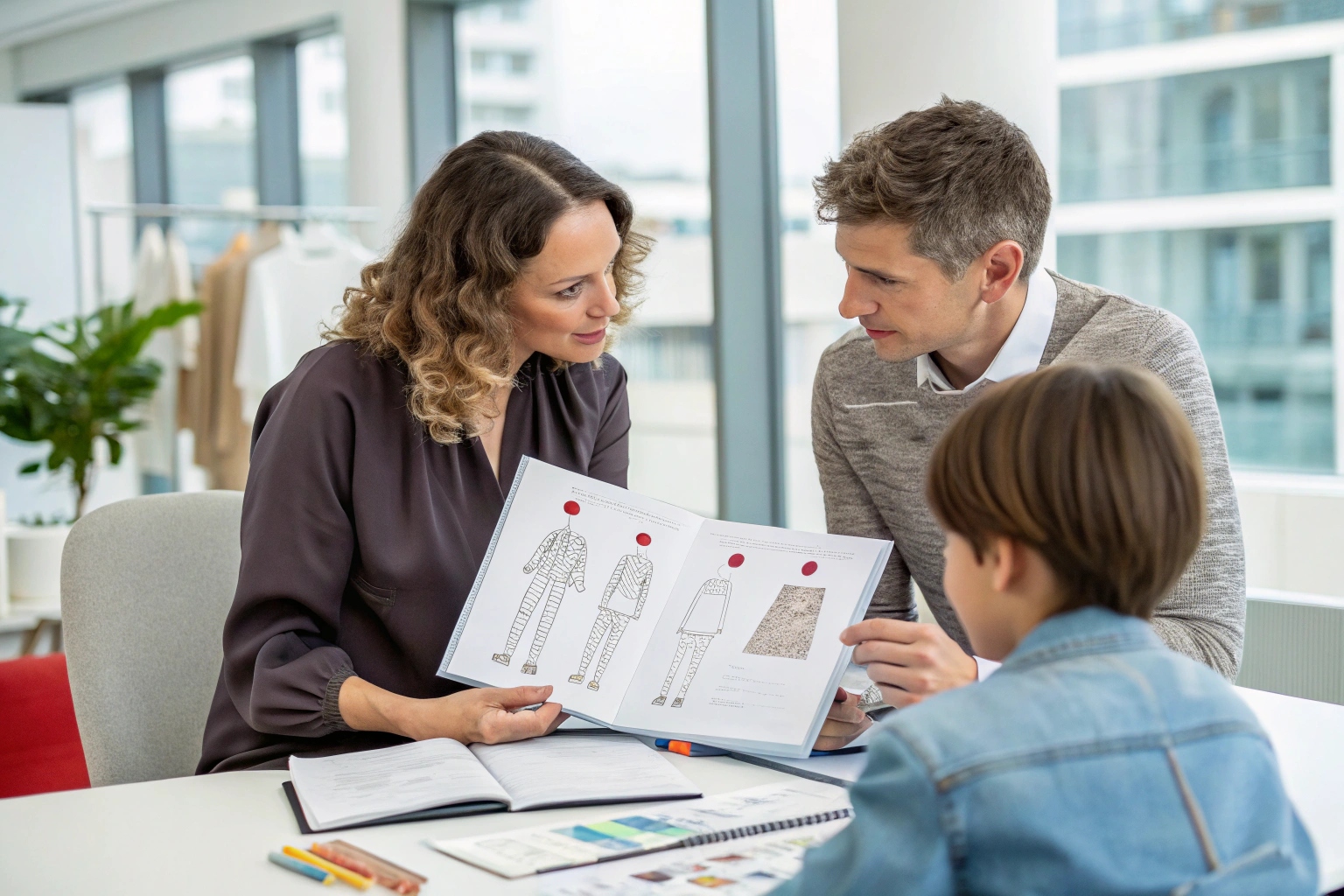If you're launching a kidswear brand or scaling your clothing line, choosing the right manufacturer isn’t just about price anymore. It’s about trust, responsiveness, quality—and whether they truly understand today’s children’s fashion and safety standards. One wrong factory partner can delay your launch, mess up your inventory, or worse, damage your brand reputation.
To avoid costly mistakes, you need to ask strategic, trendy, and future-facing questions before signing any agreement with a kidswear manufacturer. These questions go beyond basic factory audits—they tap into transparency, ethics, customization, and digital readiness.
In this article, I’ll walk you through the essential questions modern buyers must ask kidswear manufacturers today. These aren’t your typical “how many machines do you have” queries. They’re the new-generation questions that separate smart buyers from everyone else.
Do you offer sustainable and certified fabric options?
Sustainability is more than a buzzword—it’s now an expectation in kidswear. Parents and retailers alike want organic, ethical materials.
Asking about fabric certification, origin, and traceability is essential if your brand is eco-conscious or exports to Europe and the U.S.
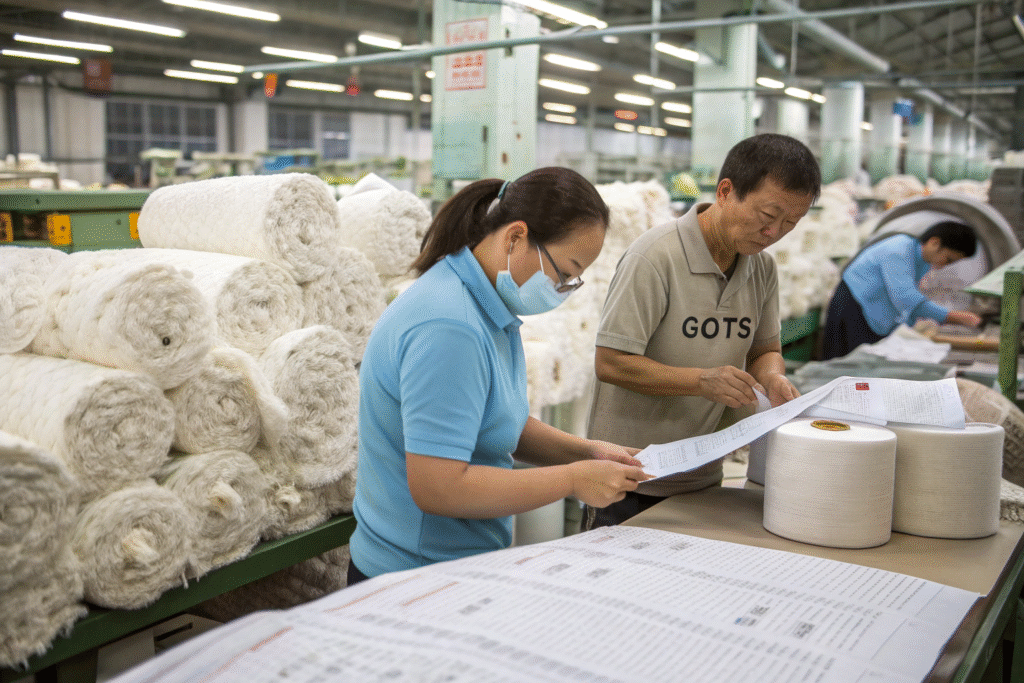
What certifications should a factory provide?
Any serious kidswear factory should offer materials certified by GOTS, OEKO-TEX, or BCI. These validate not only organic sourcing but also non-toxic dyeing and responsible labor. You can cross-check certificates using the issuer’s public database to avoid fakes. If they only say “yes we have certifications” without proof—red flag.
Can they trace material origins?
Traceability is now a trend driven by platforms like Retraced and TrusTrace. Ask your factory if they can provide details about the spinning mill, dye house, or knit source. For brands that promote transparency, it’s a marketing edge. Factories that work with global brands often use platforms to track and share this data.
Can you support low MOQ with full customization?
Customization is no longer reserved for high-volume buyers. Today’s trend is flexible manufacturing with small order quantity (MOQ) and brand-specific design options.
If you’re launching a DTC brand, testing trends, or fulfilling niche retail orders, low MOQ with full customization is a must.
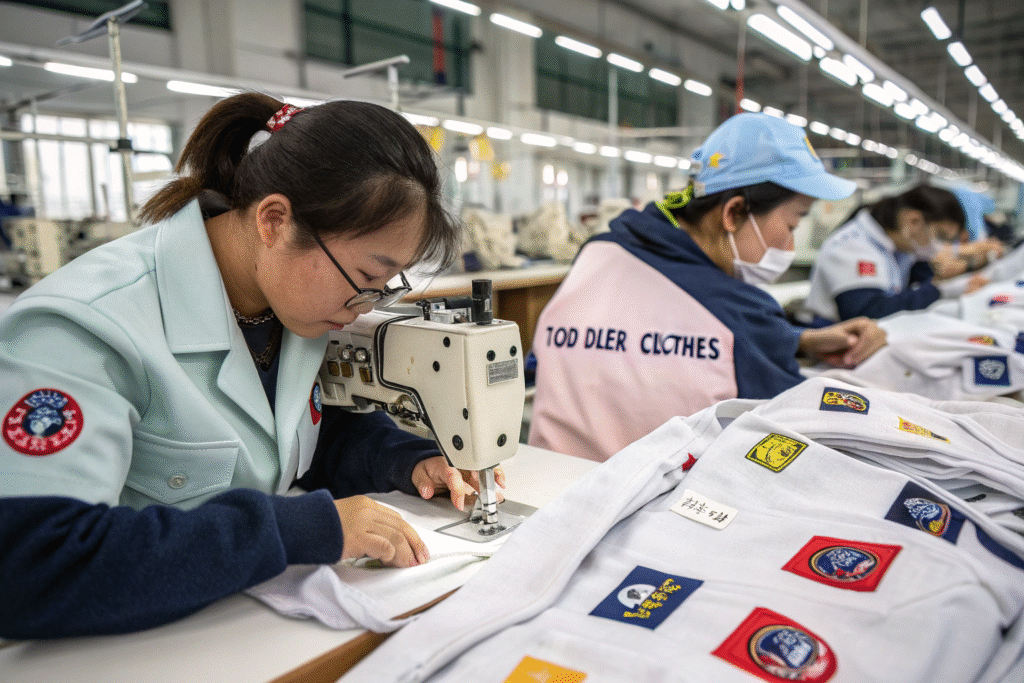
What’s the realistic MOQ for customized kidswear?
Many factories will say “100 pieces” but only if it’s a repeatable style. Ask if they can do 50 units per style with mixed sizes. Factories listed on Kickstarter Manufacturing Network or platforms like Sourcify often specialize in low MOQs with branding flexibility. Clarify whether logos are embroidered, printed, or woven into labels.
Are tech packs and design files necessary?
If the factory supports full customization, they’ll need your tech pack—even a basic one. Some offer in-house design services. Others work with cloud tools like Techpacker to align measurements, print placements, and finishing details. A good factory won’t proceed with vague instructions; if they do, quality may suffer.
How do you handle compliance with global safety standards?
Selling in the U.S., EU, or UK requires more than stylish design. You must meet strict child safety standards—from choking hazards to flammability ratings.
A modern kidswear factory should not only understand these standards but show past compliance documentation.
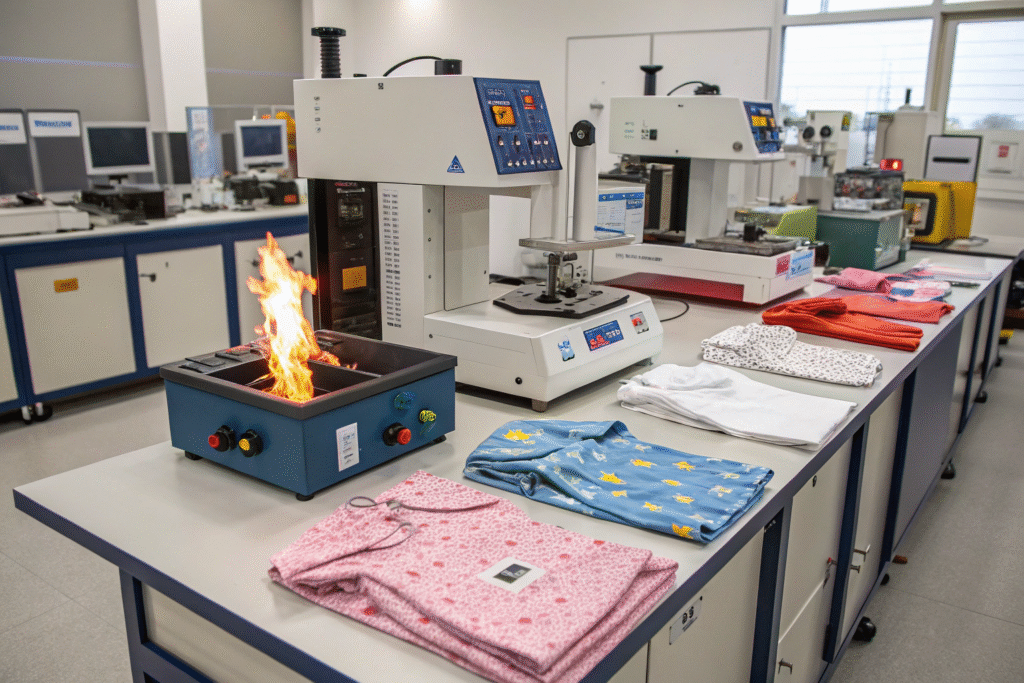
What standards should the factory follow?
In the U.S., ask if the factory knows CPSIA rules. In the EU, EN 14682 applies to cords and drawstrings. In the UK, BS 7907 is common. Good suppliers will also show test reports from SGS, Intertek, or Bureau Veritas.
Do they proactively test batches?
Some factories only test the first sample—others run batch-by-batch testing. Ask about pull tests on snaps, wash shrinkage checks, and colorfastness. Factories that sell to Walmart or Target usually maintain labs or outsource to certified third parties. If they skip testing to cut cost, your brand might face product recalls later.
How transparent is your production timeline?
Fast fashion and seasonal drops demand precision. You need to know if the factory’s promised lead time is real—or just a sales pitch.
Ask for a breakdown of each stage, not just a vague “30 days.” A transparent factory will give you stage-wise accountability.
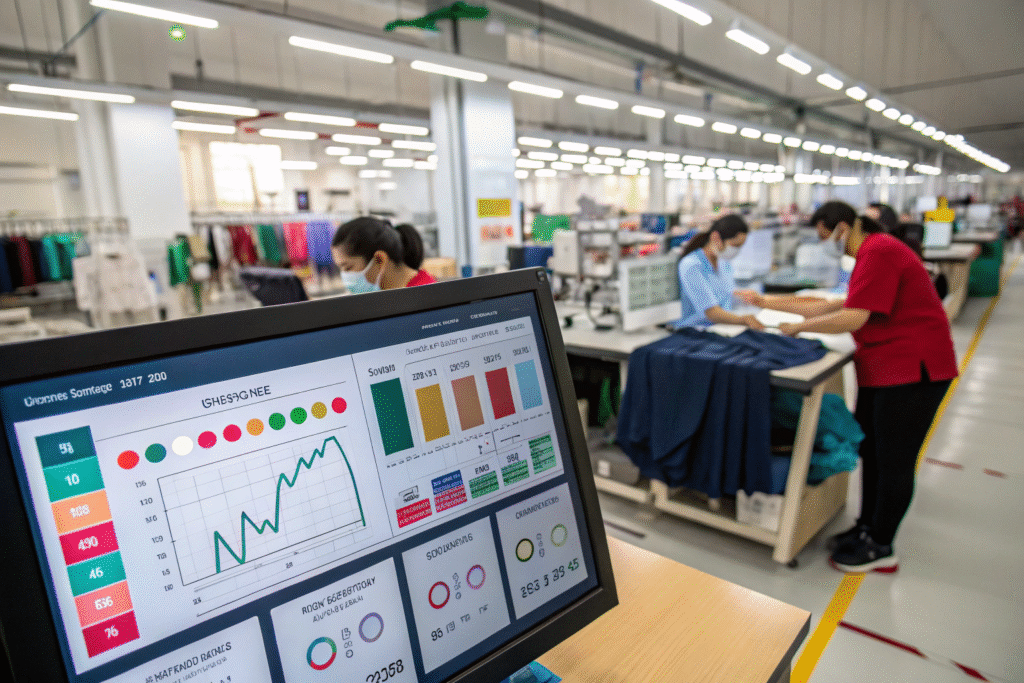
What does a real timeline breakdown look like?
| It should include: | Stage | Time |
|---|---|---|
| Sample approval | 5–7 days | |
| Material sourcing | 5–10 days | |
| Cutting & printing | 3–5 days | |
| Sewing & finishing | 7–10 days | |
| QC & packing | 2–3 days | |
| Shipping prep | 1–2 days |
Tools like Trello, Monday.com, or FactoryFix are sometimes used to share progress. Ask if the factory has any tracking system in place.
What happens when delays occur?
Delays aren’t always avoidable—holidays, material issues, or logistics strikes happen. But a responsive factory will inform you early. Good partners will have backup suppliers and alternative shipping options like DDP air freight to meet seasonal sales deadlines. If they stay silent when issues arise, they’re risking your retail launch.
Conclusion
In today’s fast-moving kidswear industry, asking the right questions can make or break your supply chain. Go beyond the basics. Dig into their certification claims, their MOQ flexibility, their safety compliance, and their delivery accountability. A factory that’s transparent, agile, and trend-aware is worth gold. I’ve worked with dozens of suppliers—some disappeared mid-season, others helped us scale seamlessly. The difference? We knew what to ask.

